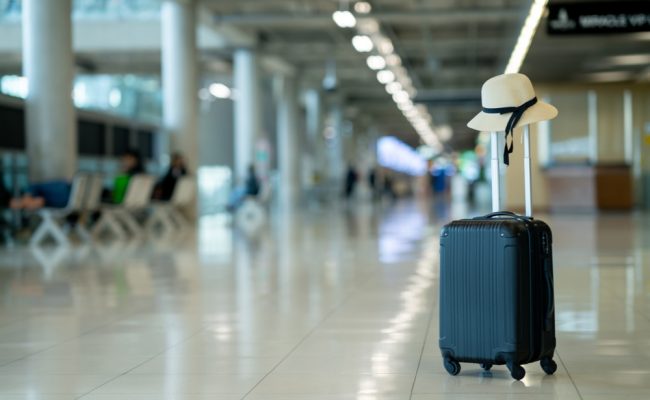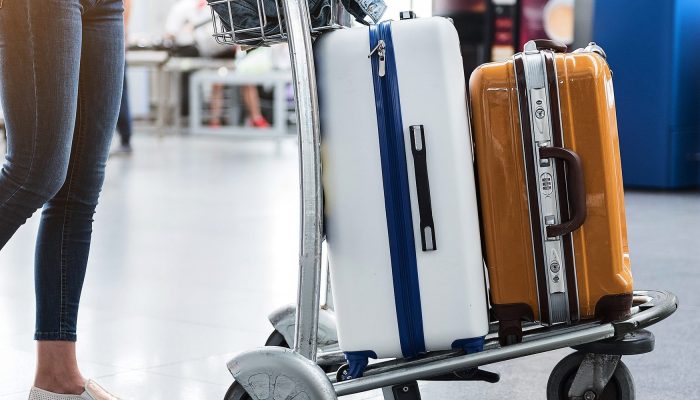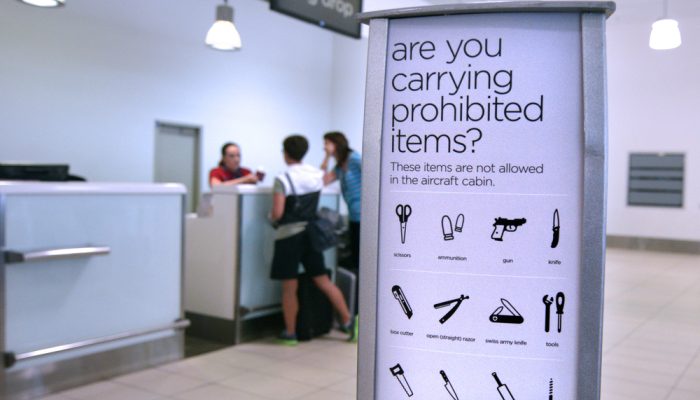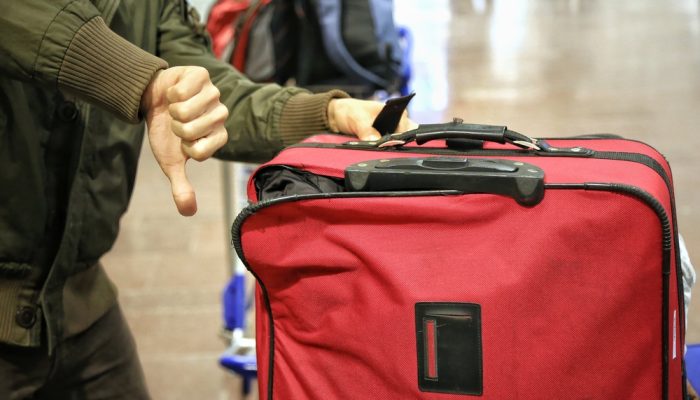Navigating the Baggage Policy of Airlines: A Comprehensive Guide

When it comes to air travel, it is important to understand the rules and regulations surrounding luggage. Navigating the baggage policies of airlines can often be a confusing and frustrating experience for travellers. With each airline having its own set of rules and regulations, knowing what to expect and how to pack efficiently can save you time and money. In this comprehensive guide, we will break down the baggage policies of some of the major airlines, provide tips on optimizing your packing strategy, and offer practical advice on how to avoid extra fees. Whether you are a frequent flyer or a first-time traveller, this guide will help you navigate the complexities of airline baggage policies with ease.
Overview of different Airline Baggage Policy – Understanding the specific baggage policies of different airlines is crucial for a seamless travel experience. In this section, we will delve into the details of various airlines such as weight limitations, size restrictions, and fees associated with checked and carry-on luggage. By having a clear overview of these policies, you can effectively plan your packing and avoid any unexpected surprises at the airport. Stay tuned as we provide insights into the baggage policies of leading airlines, enabling you to make informed decisions and ensure a hassle-free journey.
Every airline has exceptions to the free baggage allowance, based on your destination, the date you purchased or the type of airfare you have purchased.

Airlines that allow 2 Checked-in Bags for International Sectors like India to US/UK/Canada
As a passenger traveling from India to UK, US, or Canada, it’s important to know which airlines allows 2 piece baggage allowance. In this article, we will explore the different airlines that provide this policy and help you make an informed decision for your next trip.
Firstly, let’s look at Indian carriers like Air-India and Vistara are two airlines that offers 2 piece baggage allowance if passenger is traveling from India to UK/US/Canada. Checked-in luggage typically has a weight limit of 23 Kgs/ 50 pounds with some airlines allowing up to 70 pounds for an additional fee. The size of the luggage should also be considered, as it must fit within the airline’s regulations. Oversized or overweight luggage may result in extra fees or not being able to be checked in at all.
Some passengers choose Middle-East airlines as they like to take a stop-over in Dubai, Abu-Dhabi, or Doha to enjoy 3-4 days and explore these world-famous destinations. Middle East Airline carriers like Emirates, Qatar, Etihad, Saudi Arabia Airlines, and Gulf are some of the popular airlines that allow 2-piece checked-in luggage in economy class. Thus, passengers can check in two pieces of luggage without any additional charges, and great option for those who want to carry more items on their trip.
Moving on to UK and European Airlines, British Airways and Virgin Atlantic of UK and European airlines like Iberia, Turkish and Delta are the airlines that provide the facility for checked-in 2-piece bags. This is great news for passengers traveling from India to the UK as they can now pack more items and not worry about additional charges.
Furthermore, passengers flying out from East Asia to the USA/ Canada can choose Japan Airlines, All Nippon Airways, China Airlines, China Eastern Airlines, and China Southern Airlines, Singapore Airlines to enjoy access to the 2-piece luggage concept. Similarly, passengers from Africa can book with Ethiopian Airlines to travel to the USA/ UK/ Canada if they want to carry 2- checked-in bags.
However, passengers travelling with United Airlines, American Airlines, Air Canada, Lufthansa, Air France, Swiss Airways, and Finnair are only allowed to check in one bag.

Tips for Packing Efficiently to Meet Airline Regulations
Packing efficiently plays a significant role in adhering to airline baggage policies. Consider investing in a digital luggage scale to avoid exceeding weight limits. Opt for versatile clothing items to maximize your wardrobe options while minimizing the number of pieces you pack. Utilize compression bags or packing cubes to ensure an organized and compact luggage. Pack essentials in your carry-on to prevent any inconvenience in case of delayed baggage. These strategies will not only help you stay within airline regulations but also make your travel experience more convenient and stress-free.
Packing efficiently plays a significant role in adhering to airline baggage policies. Consider investing in a digital luggage scale to avoid exceeding weight limits. Opt for versatile clothing items to maximize your wardrobe options while minimizing the number of pieces you pack. Utilize compression bags or packing cubes to ensure an organized and compact luggage. Pack essentials in your carry-on to prevent any inconvenience in case of delayed baggage. These strategies will not only help you stay within airline regulations but also make your travel experience more convenient and stress-free.

Restricted Items on Carry-On bag
When it comes to carry-on bags, there are restrictions on certain items such as liquids, gels, and aerosols. These items must be placed in a clear, plastic, quart-sized bag and each individual container cannot exceed 3.4 ounces. Additionally, sharp objects and firearms are not allowed in carry-on bags. If you plan on carrying a laptop or other electronic device on board, it must be easily accessible and removed from your bag during the security screening process. Batteries must also be removed from devices and placed in a separate, clear plastic bag.
When it comes to carry-on bags, there are restrictions on certain items such as liquids, gels, and aerosols. These items must be placed in a clear, plastic, quart-sized bag and each individual container cannot exceed 3.4 ounces. Additionally, sharp objects and firearms are not allowed in carry-on bags. If you plan on carrying a laptop or other electronic device on board, it must be easily accessible and removed from your bag during the security screening process. Batteries must also be removed from devices and placed in a separate, clear plastic bag.
Some of the Prohibited Item List
- Sharp Objects – Objects like knife, Dagger, scissors, Axes & hatchets, arrows and darts, machetes, open razors and blades , tradesman’s tools that have the potential to be used as a pointed or edged weapon, e.g. drills and drill bits, box cutters, utility knives, all saws, screwdrivers, crowbars, hammers, pliers, wrenches/spanners, blow torches.
- Explosives and flammable substances – Guns and ammunition, blasting caps, detonators & fuses, non-safety matches, smoke generating canisters or cartridges, flammable liquid fuel, e.g. petrol/gasoline, diesel, lighter fluid, alcohol, ethanol, aerosol spray paint, turpentine & paint thinner, alcoholic beverages.
- Self-defence items like mace or pepper spray and other items, such as billy clubs, black jacks, brass knuckles, and other martial-arts weapons, are not permitted past security.
- Live plants and flowers –any plants or plant product be it plants potted in soil, plants with roots, seeds are not allowed in cabin as well as in checked-in luggage.

Items allowed to bring On-Board in your Carry-On Bag
- Non-flammable liquids, gels, and aerosols—including food, drinks, and toiletries—in quantities of 3.4 ounces or less.
- Passengers can pack dry batteries (AA, AAA, C, and D) in either carry-on or checked bags. Lithium batteries with 100 watt hours or less may be carried on the plane or checked, as long as they’re in a device.
- Small, portable electronic items that are smaller than a standard-size laptop, such as cell phones and tablet devices, laptops, full-size video-game consoles, full-size DVD
- Medical Equipment must be declared to screeners before going through security and are subject to additional screening.
- Passengers traveling with baby are allowed to carry baby formula, breast milk, juice, gel- or liquid-filled teethers, and canned, jarred, or processed baby food.
- E-liquids, electronic cigarettes, and vaping devices
- Disposable and electric razors are allowed.

Process of filing a Claim for Lost or Damaged Bag
In the case of lost or damaged baggage, it is important to understand the process of filing a claim. Keep all relevant receipts, luggage tags, and records handy as you may need them to support your claim. It is also helpful to have photos of your luggage and its contents as proof of its condition before it was lost or damaged. Promptly report any issues to the airline’s baggage service office on arrivals at the airport and follow up on the status of your claim. Most airlines use one of the major global baggage tracing systems. All missing baggage information is filed on this system and matched to bags recorded at airports around the world. Once a match is found, the baggage is returned to its owner. The vast majority of mishandled luggage is returned to the passenger within 48 hours. Being prepared and proactive in this process can expedite the resolution and ensure you receive fair compensation for any loss or damage to your belongings.
By understanding the rules and regulations surrounding luggage, you can have a smoother and stress-free travel experience. Safe travels!


